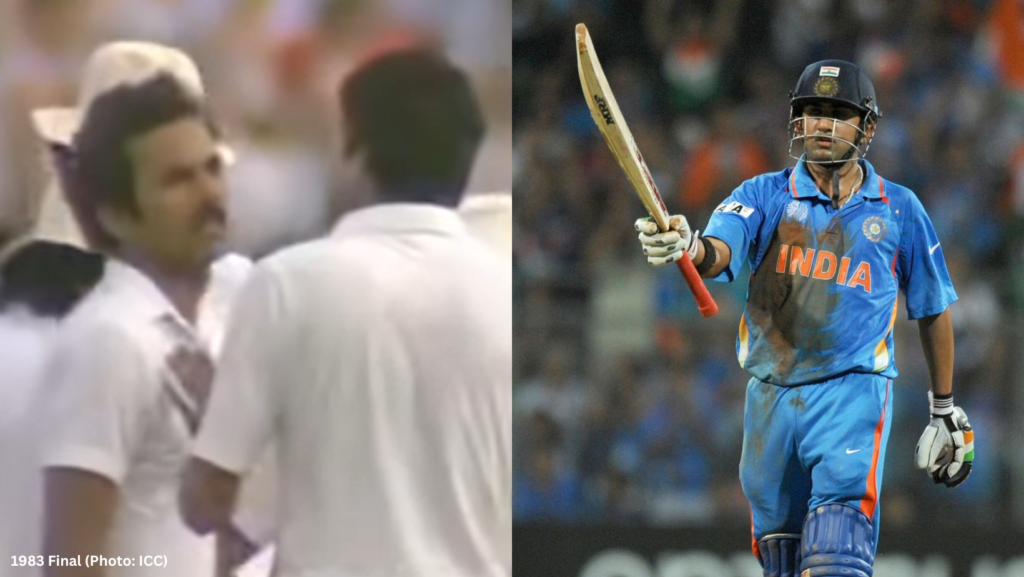
At Lord’s in 1983, Madan Lal rose above the likes of Kapil Dev and Sunil Gavaskar and turned the final in India’s favour by taking three wickets, including the big ones of Viv Richards and Desmond Haynes. Those were body blows from which the West Indies never recovered in their pursuit of a low total.
At the Wankhede Stadium in 2011, Gautam Gambhir helped the team regroup after the loss of two early wickets, steadied the ship and ultimately steered it home. Although Gambhir was no less a player, he was not the biggest of ODI names in a batting line-up that also featured Sachin Tendulkar, Virender Sehwag, Yuvraj Singh and MS Dhoni.
Neither Madan Lal nor Gambhir got Player of the Match awards, which went to Mohinder Amarnath and Dhoni. But figures of 12-2-31-3 while defending 183, and the dour 97 while chasing 275 to blunt Sri Lanka, were understated and match-defining contributions.
As the 2023 World Cup final approaches, it’s obviously impossible to tell who will play what role and how, but India won’t mind another peripheral character hogging the limelight. Sometimes in sports, they grow bigger than themselves and make lasting impressions. That makes it anybody’s game, in a different sense.
It was anything but on a cloudy London morning 40 summers ago. West Indies, the two-time defending champions, justified their tag of overwhelming favourites by dismissing the hopefuls for a below-par total. What happened next is a well-documented miracle, as the feisty Madan Lal led a fairy tale fightback.
It was a day when fighting spirit overshadowed reputation. Michael Holding, Andy Roberts, Malcolm Marshall, Joel Garner and Kapil were the fast bowlers playing that match. Nobody expected Madan Lal at medium pace to supersede them and yet he did, in an exhibition of controlled swing bowling. Did the mighty Caribbeans underestimate him? Possibly.
There was nothing of that sort in Mumbai though. Sri Lanka never took Gambhir lightly. Though small in stature, the left-hand batter was already an accomplished player. But the islanders might have thought they had got rid of the biggest thorns in their flesh by removing Sehwag and Tendulkar with 31 on the board and the crowd silent. They were sensing something like 1983.
Gambhir’s masterminding of the recovery was calculated. He took his time and ran hard between the wickets to keep the asking rate from climbing. It was his gritty calmness which built the platform for Dhoni to operate in an attacking gear. Had he got three more runs, Gambhir’s innings would have been celebrated in a much bigger way.
But Madan Lal and Gambhir do not seem to have got enough credit for the pivotal roles they played. The 1983 final is remembered for Kapil’s catch to dismiss Richards, which was no doubt a seminal moment. And when it comes to 2011, it’s mostly about Dhoni’s six to finish it off. Somewhere in between, the steely contributions of the smaller stars are forgotten.
The day of another World Cup final featuring India is an appropriate opportunity to pay a tribute to these efforts. There is a moral in the story of Madan Lal and Gambhir. For the less-celebrated performers, it doesn’t matter who makes the headline-grabbing contribution and who slips into relative oblivion, as long as the team wins.



